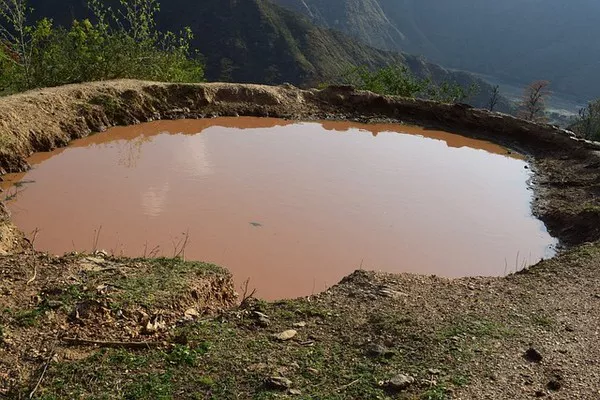Water is a precious resource, and managing wastewater effectively is crucial for public health and environmental protection. The treatment of sewage and wastewater involves a series of processes designed to remove contaminants and ensure that water released back into the environment is safe. This article delves into the methods and technologies used in wastewater treatment, exploring each stage of the process in detail.
The Importance of Wastewater Treatment
Wastewater treatment is essential for several reasons:
Public Health: Untreated sewage can contain harmful bacteria, viruses, and parasites that pose significant health risks.
Environmental Protection: Contaminants in wastewater can harm aquatic ecosystems and degrade water quality.
Resource Recovery: Modern treatment processes can recover valuable resources like biogas, nutrients, and clean water.
Stages of Wastewater Treatment
Wastewater treatment typically occurs in several stages: preliminary, primary, secondary, and tertiary treatment. Each stage serves a specific purpose in removing different types of contaminants.
1. Preliminary Treatment
Objective: Remove large solids and debris to prevent damage to subsequent treatment processes.
Process:
Screening: Wastewater passes through screens that remove large objects such as sticks, rags, and other debris.
Grit Removal: Grit chambers allow heavier particles like sand and gravel to settle at the bottom.
Flow Equalization: Tanks balance the flow of wastewater to ensure consistent treatment.
2. Primary Treatment
Objective: Remove suspended solids and organic matter.
Process:
Sedimentation: Wastewater is held in large tanks (primary clarifiers) where solids settle to the bottom as sludge. The clarified water moves on to the next stage.
Skimming: Floating materials like oil and grease are removed from the surface.
Efficiency:
This stage typically removes about 60% of suspended solids and 30-40% of biochemical oxygen demand (BOD).
3. Secondary Treatment
Objective: Degrade dissolved organic matter and remove suspended solids using biological processes.
Process:
Activated Sludge Process: This is the most common method, where air is pumped into aeration tanks containing wastewater and microorganisms. The microorganisms consume organic matter, forming flocs that settle out in secondary clarifiers.
Trickling Filters: Wastewater is sprayed over a bed of stones or plastic media coated with microbial biofilms that degrade organic pollutants.
Oxidation Ponds: Large, shallow ponds where natural processes involving algae and bacteria break down organic matter.
Efficiency: Secondary treatment can remove up to 85-90% of BOD and suspended solids.
4. Tertiary Treatment
Objective: Further polish the effluent to remove remaining contaminants and prepare water for reuse or discharge.
Process:
- Filtration: Sand or membrane filters remove remaining suspended solids.
- Nutrient Removal: Processes like biological nutrient removal (BNR) or chemical precipitation reduce nitrogen and phosphorus levels.
- Disinfection: Chlorination, ultraviolet (UV) radiation, or ozonation kills pathogenic microorganisms.
Advanced Processes:
- Activated Carbon Adsorption: Removes trace organic compounds and micropollutants.
- Reverse Osmosis (RO): A high-pressure process that removes dissolved salts and other impurities.
Efficiency: Tertiary treatment can achieve removal of over 99% of contaminants, making the effluent suitable for various reuse applications.
Sludge Treatment and Disposal
The sludge produced during primary and secondary treatment contains high concentrations of organic matter and pathogens. Proper treatment and disposal of sludge are crucial.
Processes:
Thickening: Reduces the volume of sludge by removing excess water.
Digestion: Anaerobic or aerobic digestion stabilizes the sludge by breaking down organic matter, reducing volume, and producing biogas.
Dewatering: Further reduces sludge volume through centrifuges, belt filter presses, or drying beds.
Final Disposal: Treated sludge can be disposed of in landfills, incinerated, or used as fertilizer in agriculture if it meets regulatory standards.
Emerging Technologies in Wastewater Treatment
Innovations in wastewater treatment are focusing on improving efficiency, reducing costs, and recovering valuable resources. Some emerging technologies include:
Membrane Bioreactors (MBRs): Combine biological treatment with membrane filtration for high-quality effluent.
Electrocoagulation: Uses electrical current to remove suspended solids and contaminants.
Forward Osmosis (FO): An alternative to reverse osmosis with lower energy consumption.
Constructed Wetlands: Utilize natural processes involving plants and microorganisms to treat wastewater.
See also What Causes Septic Tank Odor In House
Challenges and Future Directions
1. Aging Infrastructure
Many wastewater treatment facilities, especially in developed countries, are aging and require upgrades to handle increasing loads and meet stricter regulatory standards.
2. Climate Change
Extreme weather events and rising sea levels pose significant challenges to wastewater treatment infrastructure, necessitating resilient and adaptable systems.
3. Microplastics and Emerging Contaminants
Conventional treatment processes are often ineffective at removing microplastics and emerging contaminants like pharmaceuticals and personal care products, prompting research into new treatment methods.
4. Energy Consumption
Wastewater treatment is energy-intensive. There is a growing emphasis on developing energy-efficient processes and integrating renewable energy sources to reduce the carbon footprint.
5. Water Reuse
With increasing water scarcity, water reuse is becoming more critical. Advanced treatment processes are enabling the safe reuse of treated wastewater for irrigation, industrial processes, and even potable water supplies.
Conclusion
The treatment of sewage and wastewater is a complex but essential process for maintaining public health, protecting the environment, and conserving water resources. By understanding the stages of wastewater treatment, the technologies involved, and the challenges ahead, we can appreciate the vital role that effective wastewater management plays in our society. Continued innovation and investment in wastewater treatment infrastructure are crucial for meeting future demands and ensuring sustainable water management.

